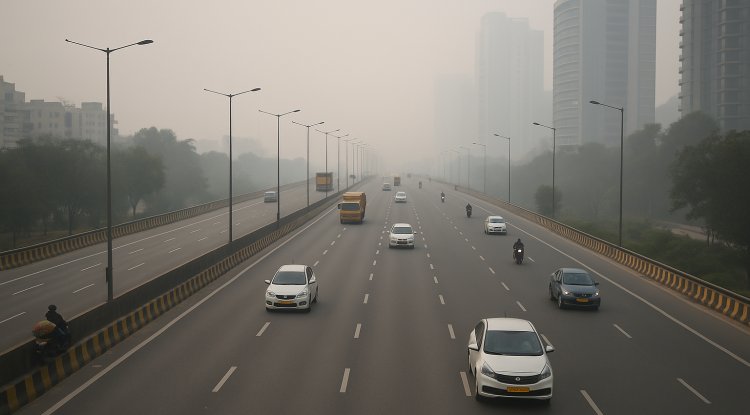Transportation Gridlock: Severe Winds Disrupt Northern China
Strong winds caused by a cold vortex system swept through Beijing and northern China, leading to the cancellation of hundreds of flights and suspension of rail services. Tourist sites closed and public events were postponed as authorities issued high-level warnings. The event highlights China’s increasing vulnerability to extreme weather linked to climate change.

North China, including the capital city of Beijing, was severely disrupted during the weekend with fierce gusts sweeping through the region, prompting authorities to release high-end warnings and restrict outdoor activities. They were prompted by a system of cold vorticity coming from Mongolia, which gained power from Friday and persisted during the weekend, the China Meteorological Administration (CMA) indicated. The adverse weather conditions had led to massive cancellations of air and rail services, the closure of principal tourist attractions, and the suspension of public activities for a duration. By the afternoon of Saturday, CCTV state broadcaster reported 699 flights to be cancelled from Beijing's Capital and Daxing International Airports. Numerous high-speed train lines also suspended operations as a precautionary response, mirroring the widespread transport impact throughout north China. The CMA made a warning that parts of it will see gusts equal to or greater than all-time highs for this period since 1951. Beijing replied by deploying its first orange alert in a decade—a second-highest alert level—for its strong winds, meaning an atypical and extreme weather event in the region.
Tourist attractions such as the Summer Palace, Temple of Heaven, Beijing Zoo, and Universal Studios were closed as a precautionary measure. The capital city also postponed a half-marathon on Sunday that would have featured humanoid robot racers, illustrating the influence of weather on entertainment as well as innovative public events. The public was requested by the authorities to remain indoors unless absolutely necessary. Despite the extensive destruction of public venues and infrastructure, like near about 300 trees which were uprooted and 19 cars that were wrecked in the capital, no one was injured in Beijing as of Saturday night. The storm was also a source of discomfort to everyday life and business, with restriction on mobility and closing causing inconvenience to both residents and visitors. Authorities are on guard as the whirlwind keeps changing and warnings are still being given as the weather system slowly dies down.
These powerful winds and their impact are part of greater trends in extreme weather events witnessed in China in recent years. Scientists and green activists have attributed the increasing frequency and severity of such occurrences to climate change. China remains the biggest emitter of greenhouse gases in the world, and the country is increasingly finding it difficult to deal with climate-related tragedies. Last year's storms in several parts of the country brought widespread flooding, and dozens were killed and mass evacuations were made. In another major event, continuous rainfalls in southern China led to a highway collapse in May, killing 48, and highlighting the shortcomings in infrastructure during extreme weather.
The recent windstorm reminds us all again of the strong need for improved disaster preparation and long-term action to be more resilient, especially in urban areas where density makes climate extremes worse. As more and more Chinese cities continue rapid development, climate specialists emphasize that integrating climate information into city development policy and plans is crucial. The CMA boosted forecasting and campaigns to alert people about minimizing risks of such sudden environmental shifts but has encountered persistent implementation challenges.
This event also points towards dependency on meteorological data to make prompt decisions in transport and safety sectors. Airports, railway stations, and urban planners have all cooperated with weather services in order to minimize disruptions and reduce risks. While these belated emergency decisions saved lives this time, the financial losses in terms of delays, cancellations, and public closure are humongous. Tourist, transport, and retail industry companies are especially hit, especially in a season when outside activity is usually high.
In the coming times, China's government is under pressure to increase adaptation and mitigation efforts to cope with more and more unstable weather patterns. This includes investing in green infrastructure, making public utilities more climate-resilient, and reducing emissions through cleaner energy shifts. Governments should also make sure that data-driven decision-making becomes accessible at all levels of the government and that emergency response systems are well funded and used efficiently.
Globally, such extreme weather patterns are increasing as the effects of global warming are intensifying. With Beijing and other cities frequently hit by smog, heatwaves, flood, and now high-intensity windstorms, climate resilience has become a priority issue for China's planners. These challenges are being experienced by cities all over the globe, and thus international cooperation and mutual learning are necessary to counter the long-term threat of climate instability. With China's economic development and urbanization still ongoing, reconciling development with environmental protection will be a priority to avoid further human and economic losses from climate disasters.
Source/Credits:
2025 AFP via Phys.org | Data: China Meteorological Administration, CCTV
What's Your Reaction?

















